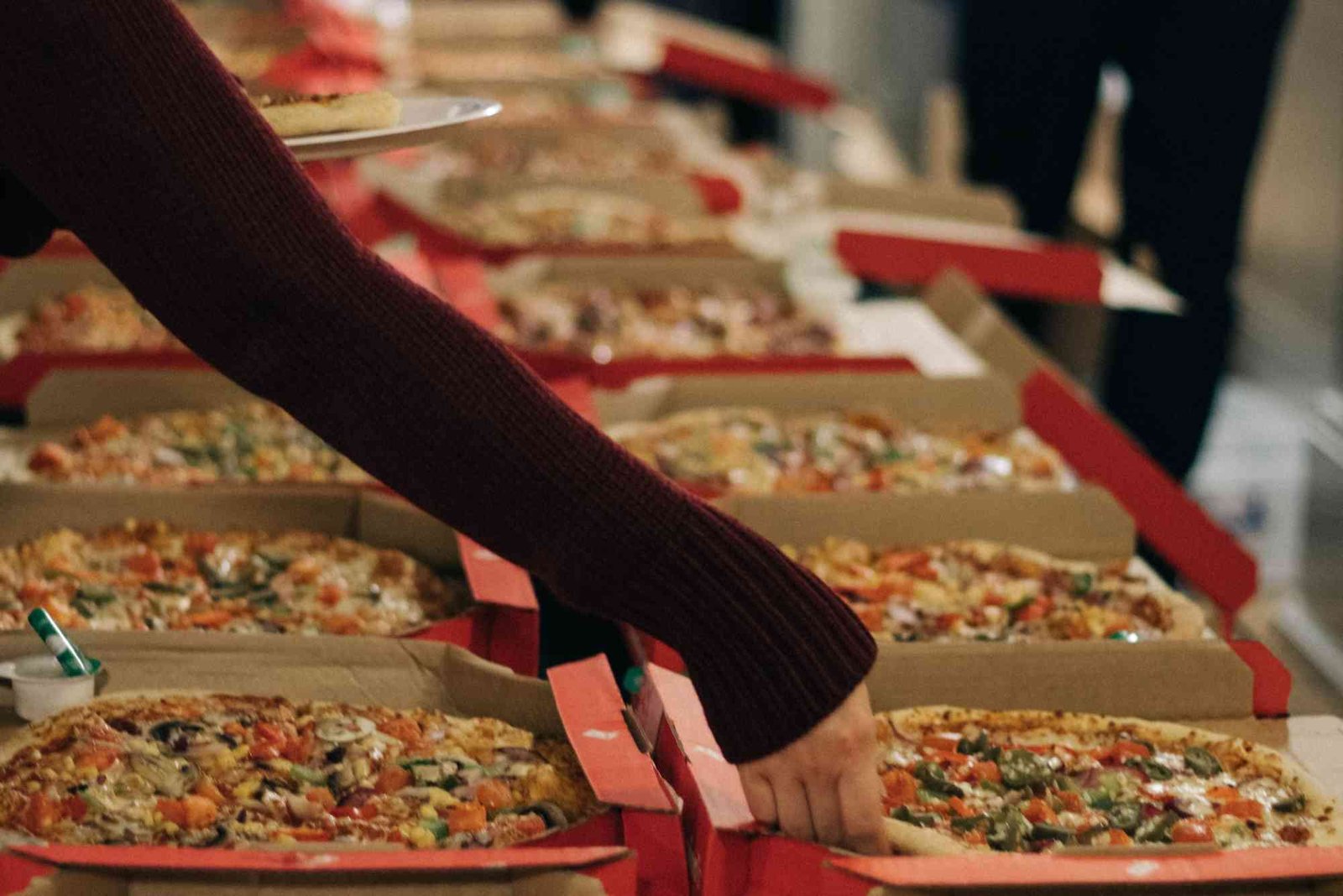Introduction
Cheese pizza — simple, classic, and universally loved — is often the first kind of pizza anyone tastes. But what does cheese pizza mean, really? Is it just pizza with cheese on top, or is there more to this comforting dish than meets the eye? In this detailed beginner’s guide, we’ll explore the meaning, ingredients, history, and variations of cheese pizza. Whether you’re new to pizza-making or just curious about the origins of your favorite comfort food.
What Does Cheese Pizza Mean?
At its core, cheese pizza refers to a pizza topped primarily with tomato sauce and cheese — usually mozzarella. It is the most basic and traditional form of pizza and serves as the foundation for countless variations. The simplicity of cheese pizza highlights the quality of its ingredients. When you take a bite, you experience the perfect balance of a crispy crust, tangy tomato sauce, and rich, melted cheese.
In most cases, when people order a “plain pizza,” they’re referring to a cheese pizza. It’s the starting point for pizza-making — a base that can be customized with vegetables, meats, and other toppings. For beginners, cheese pizza is the best way to understand the essentials of pizza flavor and texture before exploring more complex varieties.
The History Behind Cheese Pizza
Cheese pizza has deep roots in Italian culinary tradition. It originated in Naples, Italy, in the late 18th century. The original Neapolitan pizza was made with simple ingredients: dough, tomato sauce, olive oil, and fresh mozzarella. This combination was beloved by locals for its affordability and taste.
As Italian immigrants brought pizza to the United States in the early 1900s, the dish evolved. American pizza makers started using different types of cheese, like low-moisture mozzarella, cheddar, and provolone, to create a variety of textures and flavors. The result was the birth of modern cheese pizza — a dish that represents both tradition and innovation.
Ingredients That Define Cheese Pizza
Every great cheese pizza starts with four essential elements: dough, sauce, cheese, and seasoning. Each plays a key role in shaping the pizza’s flavor.
The Dough
Pizza dough is the foundation. A traditional cheese pizza uses a yeast-leavened dough made from flour, water, salt, and olive oil. The texture can vary depending on style — thin and crispy in New York, thick and airy in Chicago, or soft and chewy in Naples.
The Sauce
Tomato sauce adds a tangy base that balances the richness of the cheese. Authentic Italian pizza uses San Marzano tomatoes, crushed and seasoned with garlic, basil, and oregano. In American versions, sauces can be sweeter or spicier, depending on regional preferences.
The Cheese
The star of the dish is, of course, the cheese. Traditional cheese pizza uses mozzarella because of its smooth melt and mild flavor. However, many pizzerias mix cheeses for depth — combining mozzarella with parmesan, provolone, or fontina. The choice of cheese can dramatically change the flavor and texture of the pizza.
The Seasoning
While cheese pizza is simple, herbs like basil, oregano, and parsley can elevate its taste. Some chefs drizzle olive oil or sprinkle crushed red pepper for an extra layer of flavor.
Types of Cheese Pizza Around the World
Although cheese pizza started in Italy, it has taken on many regional identities. Each variation reflects local tastes and ingredients.
Neapolitan Cheese Pizza
The original version, Neapolitan pizza, features fresh mozzarella, tomato sauce, and basil on a soft, chewy crust. It’s baked at high temperatures in wood-fired ovens, giving it a slightly charred flavor.
New York-Style Cheese Pizza
New York-style cheese pizza is known for its thin crust and wide, foldable slices. It uses low-moisture mozzarella for that perfect stretch and is often sold by the slice in bustling city pizzerias.
Chicago Deep Dish Cheese Pizza
Chicago’s take is the opposite — thick, buttery crusts filled with layers of cheese, sauce, and toppings. The cheese sits beneath the sauce, preventing it from burning during the long baking process.
California Cheese Pizza
California-style pizza uses fresh, local ingredients and often features nontraditional cheeses like goat cheese or ricotta. It’s a modern, artisanal take on the classic cheese pizza.
Why Cheese Pizza Is So Popular
Cheese pizza’s popularity lies in its simplicity and universal appeal. It’s comforting, affordable, and customizable. Even those who don’t like too many toppings appreciate the straightforward flavors of a cheese pizza.
The balance of textures — crunchy crust, gooey cheese, and tangy sauce — makes it a perfect comfort food. Moreover, cheese pizza is ideal for picky eaters, children, and anyone new to pizza culture. It’s also the base upon which nearly all pizza variations are built.
Nutritional Insights for Beginners
While cheese pizza is delicious, understanding its nutritional value helps you make smarter choices.
A typical slice of cheese pizza contains carbohydrates from the crust, protein from the cheese, and some fats from both the cheese and olive oil. For a healthier version, you can use whole wheat crust, low-fat mozzarella, and fresh tomato sauce with less sugar and salt.
Pair your cheese pizza with a salad or grilled vegetables for a more balanced meal. If you’re interested in improving your eating habits, exploring food basics can help you make informed dietary decisions.
Cheese Pizza and Culture
Cheese pizza isn’t just food — it’s a cultural symbol. It’s the go-to dish at birthday parties, movie nights, and family gatherings. In the U.S., it’s also part of national identity, celebrated on “National Cheese Pizza Day” every September 5.
Globally, cheese pizza represents connection and comfort. No matter where you go, you can find a local version of cheese pizza that carries the warmth of shared meals and familiar flavors.
How to Make the Perfect Cheese Pizza at Home
Making a cheese pizza at home is easy, even for beginners. Here’s a quick overview of how to do it:
Prepare the dough using flour, water, yeast, and olive oil. Let it rise until doubled in size.
Preheat your oven to the highest setting (around 475°F or 250°C).
Roll out the dough into a circle and spread tomato sauce evenly.
Add shredded mozzarella cheese generously on top.
Bake for 10–12 minutes until the crust is golden and the cheese is bubbling.
Let it cool slightly before slicing and serving.
For those interested in more details, check out this guide to what does cheese pizza mean for deeper insights and tips from pizza experts.
Common Mistakes Beginners Make
Many first-time pizza makers make simple mistakes that affect the final taste and texture. Here are a few to avoid:
Using too much sauce — it can make the pizza soggy.
Skipping preheating — a hot oven ensures a crisp crust.
Overloading cheese — more isn’t always better; it can make the pizza greasy.
Ignoring resting time — allowing dough to rest improves texture and flavor.
Food Safety and Storage Tips
Best What Does Cheese Pizza mean For Beginners , so proper storage is essential. If you have leftovers, refrigerate them within two hours of baking. To reheat, use an oven or skillet to retain crispness. Avoid microwaving, as it can make the crust chewy. If you want to learn more about proper food handling, check out the FDA’s official food safety tips. These guidelines help ensure that every slice you enjoy is both tasty and safe.
Cheese pizza is more than a simple dish — it’s a timeless comfort food that unites people worldwide. Whether you enjoy it fresh from the oven or as a quick meal on a busy night, its classic combination of dough, sauce, and cheese never fails to satisfy.
For beginners, understanding what does cheese pizza mean opens the door to appreciating the art of pizza-making. From its Italian roots to its modern-day variations, cheese pizza remains a symbol of simplicity, flavor, and joy.
If you’re ready to dive deeper into pizza culture or learn how to make your own, visit this detailed guide to what does cheese pizza mean. Explore more about food basics and stay safe with these food safety tips. Your perfect slice of cheese pizza awaits — start your journey today!
FAQs
1. What is considered a cheese pizza?
A cheese pizza typically includes a base of dough topped with tomato sauce and cheese, most often mozzarella.
2. Is cheese pizza vegetarian?
Yes, most cheese pizzas are vegetarian. However, always check if the cheese contains animal rennet if you follow a strict vegetarian diet.
3. What’s the difference between cheese pizza and plain pizza?
They’re essentially the same thing. “Plain pizza” is just another term for a classic cheese pizza with no extra toppings.
4. What cheese is best for pizza?
Mozzarella is the traditional choice, but you can mix it with parmesan, provolone, or cheddar for extra flavor.
5. How long can I store leftover cheese pizza?
Leftovers can be stored in the refrigerator for up to four days or frozen for one to two months.




